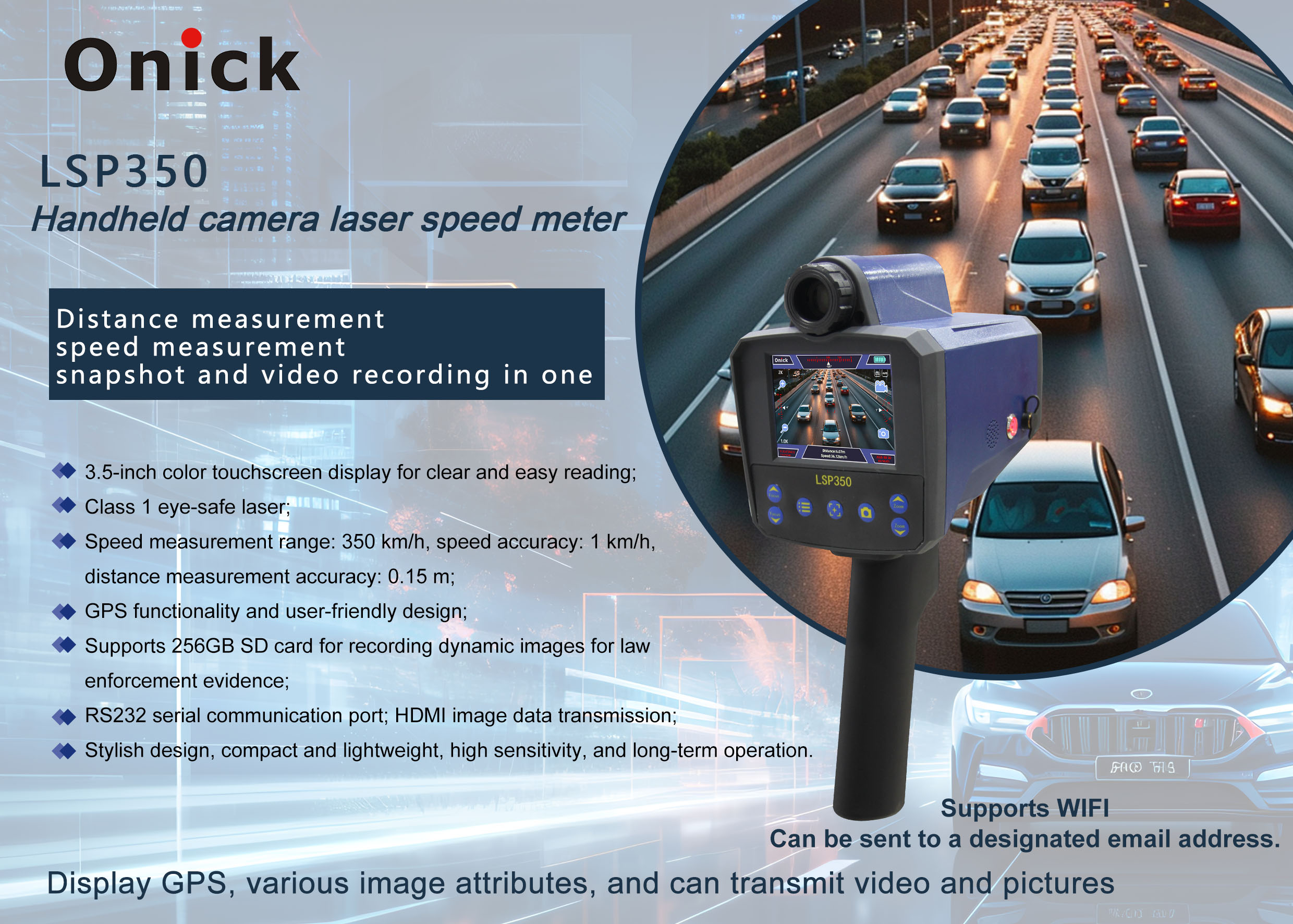A speedometer is an instrument used to measure the speed of an object and is widely used in fields such as traffic management, sports, and industrial production. Its operating principles are based on different physical principles, with common ones including radar, laser, and geomagnetic loop speed measurement. The following details the specific implementation methods of these speed measurement methods.
The radar speedometer is the most common speed measurement device, primarily used for road traffic management. It uses the Doppler effect to measure vehicle speed. A radar speedometer transmits a beam of radio waves. When this beam strikes a moving vehicle, the frequency of the reflected wave changes. By calculating the difference between the transmitted and received frequencies, the vehicle's speed can be accurately calculated. This speed measurement method has the advantages of being simple to operate, capable of measuring speed over long distances, and unaffected by weather conditions. However, its disadvantages are that it is susceptible to interference from other radio signals and can produce errors when measuring multiple targets.
The laser speedometer, also known as a laser velocimeter, is another common speed measurement device. It emits a laser pulse and measures the time difference between the emission and reflection of the laser to calculate the distance to the target object. By continuously measuring multiple distances, the speed of a target object can be calculated. The advantages of laser speed meters are high accuracy, the ability to precisely measure a single target, and the lack of interference from other objects. However, their disadvantages are that they require stability during measurement, and the narrow laser beam requires precise alignment with the target.
Onick LSP350 Handheld Laser Speed Meter with Camera
Product Features:
1. 3.5-inch color touchscreen display for clear and easy readings
2. Class 1 eye-safe laser
3. Speed measurement range: 0 to 350 km/h, speed accuracy: 0.5 km/h, distance accuracy: 0.1 m
4. GPS functionality for a user-friendly design
5. Supports 256GB TF cards for recording dynamic images for law enforcement evidence
6. HDMI image data transmission
7. Novel design, compact and lightweight, with high sensitivity and long operating time

A ground-sensing coil speed meter is a speed measurement device based on electromagnetic induction, typically buried beneath the road. It consists of a set of coils. When a vehicle passes through them, the electromagnetic field in the coils changes, generating an electrical signal. By measuring the time difference between the vehicle passing the two coils, the vehicle's speed can be calculated. The advantages of this speed measurement method are low cost and unaffected by weather and lighting conditions. However, its disadvantages are that installation and maintenance are complex and require road surface damage for installation.
In addition to the common speed measurement methods mentioned above, there are other speed measurement technologies, such as video speed measurement and ultrasonic speed measurement. Video speed measurement uses a camera to capture images of a moving vehicle and then calculates its speed using image processing. The advantages of this method are that it can monitor multiple lanes simultaneously and record vehicle image information. However, its disadvantages are that it is significantly affected by lighting and weather conditions and may not perform well at night or in inclement weather. Ultrasonic speed measurement calculates speed by emitting ultrasonic waves and measuring the time difference between reflected waves. It is suitable for certain industrial scenarios.
The accuracy of a speedometer is affected by several factors. The first is the calibration of the equipment, which requires regular calibration to ensure accurate measurement results. Second, environmental factors such as temperature, humidity, and electromagnetic interference can affect the performance of a speedometer. The operator's skill level can also affect measurement results. When using a speedometer, strict adherence to operating procedures is essential to ensure the reliability of the measured data.
In practical applications, the choice of speedometer depends on specific needs. For example, in traffic management, radar and laser speedometers are common choices because they can measure speed without contacting the vehicle and are suitable for high-speed vehicles. In industrial production, ground-sensing loop speedometers or video speedometers may be more suitable because they can adapt to complex production environments.
The development of speedometers is also constantly evolving with technological advancements. For example, in recent years, some new speedometers have begun to utilize multi-sensor fusion technology, combining multiple speed measurement methods such as radar, laser, and video to improve measurement accuracy and reliability. Some intelligent speedometers also feature data analysis and storage capabilities, recording historical speed data for subsequent analysis.
In general, the speedometer is a very important measurement tool with a wide range of applications and diverse technical principles. Different speed measurement methods have their own advantages and disadvantages, and the choice in practical applications should be based on specific needs. With the continuous advancement of technology, the accuracy and functionality of speed guns will continue to improve, providing more reliable speed measurement services for various industries.
Application areas: Traffic speed measurement, road and factory areas, highways, field training, sports competitions, military and police technology, etc.


